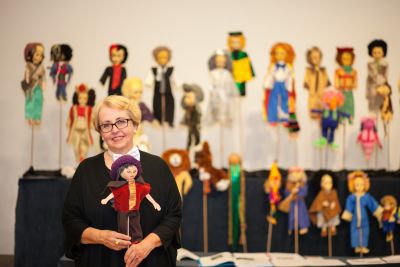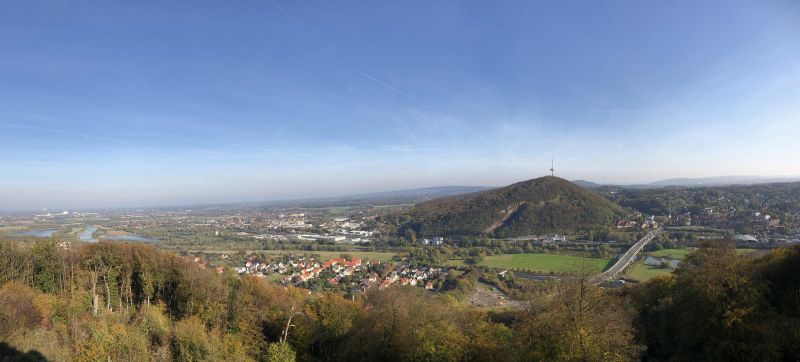Tales from the hills. The fate of Polish forced labourers at Porta Westfalica 1944/45
Mediathek Sorted






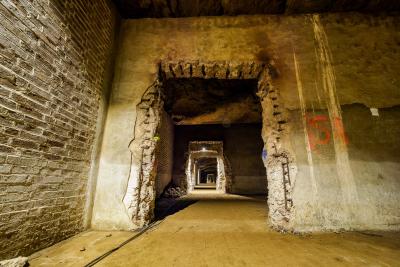
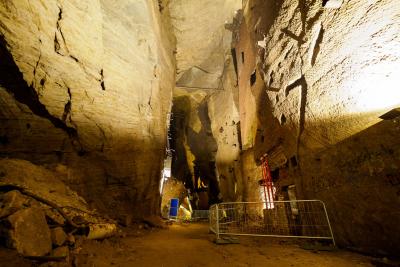

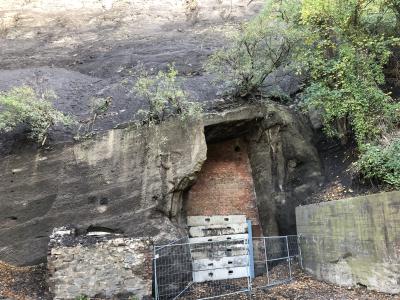

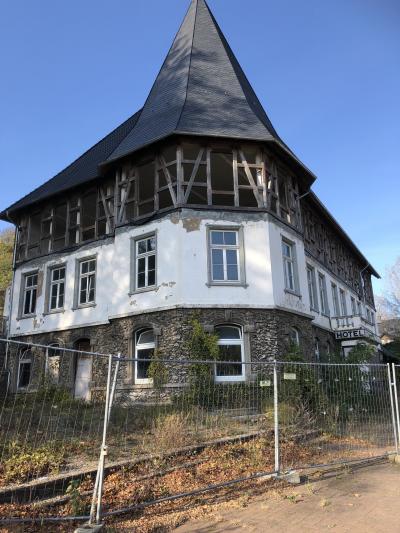

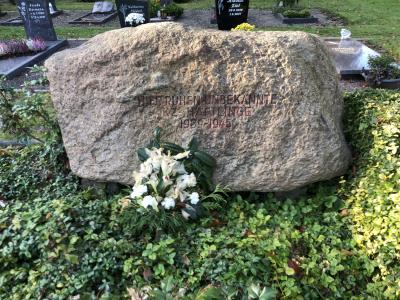

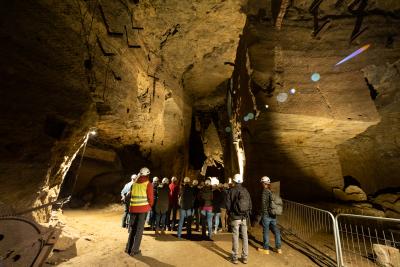

Henryk Stróżyk, another Polish concentration camp inmate in Barkhausen, also gave a vivid impression of the satellite camp building:
“Round about [the camp building; author’s note] there was barbed wire, and watchtowers stood on the corners. The hall was very large. In the middle, there was a muster ground, and surrounding it were four-tier beds made of wood. On the walls there were large windows with fold-out shutters made of sheet metal, which had thick wire mesh. On the stage, the podium, were the beds used by the senior prisoners and the foreman. There was no heating, and it was just as cold inside the building as it was outside”.[16]
Over the entire period during which forced labourers were used at the Porta, appoximately 1,500 male prisoners were housed in the around 40-metre long, 25-metre wide and 5-metre high hall building (Figs. 4 

The second of the three satellite camps at the Porta was built in the autumn of 1944 on the right bank of the Weser in the territory of the former village of Neesen, directly opposite Barkhausen. However, this camp, Lerbeck, was not named after the place in which it was situated, but rather after the place in which the work was to be conducted.[20] Here, a total of around 500 male prisoners from different countries were interned, first under the command of SS-Unterscharführer Heinz Rast, and later under SS-Oberscharführer Richard Emanuel Eichler.[21] There is evidence to prove that in this camp, too, the inmates suffered from malnutrition, as well as from the violence and harassment meted out by the SS camp command. For example, according to an account by Hermann Langbein, a prisoner at Lerbeck, one Belgian inmate was murdered in a particularly brutal fashion by camp commander Eichler through blows to the skull.[22] Research into the camp to date has found evidence of 34 deaths at the Lerbeck/Neesen satellite camp, although it is likely that the real figure is higher.[23]
The third satellite camp was established at the start of 1945 on Frettholzweg in Hausberge. It was used mainly for Jewish women from the Netherlands and Hungary, who had been deported to the Porta from Auschwitz concentration camp, from Horneburg, a satellite of the Neuengamme concentration camp, and from Reichenbach, a satellite of Gross-Rosen concentration camp. Around 1,000 women were interned in the Hausberge camp. They were made to work underground, producing radio tubes for Philips.[24] They, too, suffered from harassment in their camp. In some cases, they were even subjected to severe maltreatment from female guards.[25] Relatively little is known about this camp and the lives of the prisoners there compared to the other two.
All three satellite camps were cleared on 1 April 1945 – just five days before the Allied troops crossed the Weser line and liberated the villages at the Porta. The male prisoners from the camps in Barkhausen and Lerbeck/Neesen were taken on two trains to the camp at Wöbbelin, where they were finally liberated by US troops at the start of May 1945. It is harder to reconstruct the journey made by the female prisoners from the Hausberge camp after it was cleared and, in particular, where they were taken to. Currently, we can only draw conclusions about possible interim destinations of individual prisoners, such as Bergen-Belsen or Bendorf.
[16] Stróżyk, Wojciech: Eine Geschichte zwischen 1939–1945. Ein Interview mit meinem Großvater Henryk Stróżyk, p. 18.
[17] See Fröbe, Rainer, p. 228; p. 238; see Schulte, Jan Erik, p. 136.
[18] See Fröbe, Rainer, pp. 228 ff.; see Stróżyk, Wojciech, p. 18.
[19] See Fröbe, Rainer, p. 240 f.
[20] See Schulte, Jan Erik, p. 141.
[21] As well as Poland, this group of prisoners came from Belgium, Denmark, Germany, France, Greece, Yugoslavia, the Netherlands, Austria, the Soviet Union and Czechoslovakia; see ibid. p. 141 f.
[22] See ibid., p. 142.
[23] See KZ-Gedenk- und Dokumentationsstätte Porta Westfalica: Das Lager in Neesen / Lerbeck, in: https://www.gedenkstaette-porta.de/?page_id=32, last accessed on 13/2/2020.
[24] See Schulte, Jan Erik, p. 142 ff.
[25] See KZ-Gedenk- und Dokumentationsstätte Porta Westfalica: Das Frauenlager in Hausberge, in: https://www.gedenkstaette-porta.de/?page_id=42, last accessed on 13/2/2020.

